We hope that each of you, our readers, will greatly enjoy and appreciate this article we present to you about these 6 Stunning North American Bees. It was certainly our pleasure to gather the various information for you. May it provide you with both education and increased awareness.
Certainly, while, amazing, these few species listed herein represent only a portion of the similar species found in this region. It’s our belief, though, that they serve as excellent representations of the members of this Class. Check out some of our many other articles for similar marvels.
Southern Plains Bumblebee
Southern Plains Bumblebee Facts
- Leading off this article about 6 Stunning North American Bees we present the fascinating creature going by the title of the Southern Plains Bumblebee.
- The highly informative term given to it herein easily serves as the most frequently used common name for this amazing invertebrate. For the moment, the intriguing insect has no other accepted general name. Though certainly not unknown, that’s uncommon.
- Among scientists, however, the insect’s better known by its technical moniker. Unlike many such titles, however, that’s a comparatively simple term for the layperson to pronounce. That’s because the seemingly delicate Arthropod bears the official title of Bombus fraternus.
- The remarkable creature received that relatively easy name due to the efforts of the respected British entomologist, Frederick Smith. He recorded the first recognition of the creature as a separate and distinct species. That scientifically noteworthy event took place in 1854.
- Regrettably, the population numbers of the beautiful Southern Plains Bumblebee appear to presently be dwindling rapidly. That sad situation also seems to hold true throughout the entirety of its known range. Accordingly, the IUCN currently lists it as Endangered.
- The wonder of Nature and evolution faces multiple threats to its continued existence as a species. Most of these stem either directly or indirectly from the actions of humans. They include the perils of habitat degradation or loss. It also faces the danger of climate change.
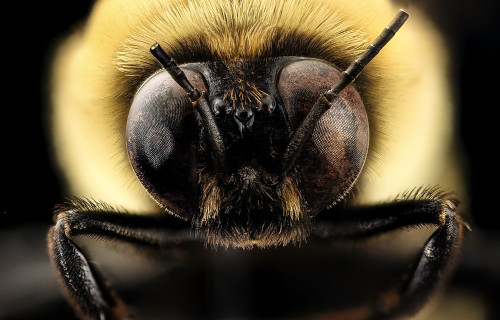
Southern Plains Bumblebee Physical Description
The fascinating Southern Plains Bumblebee constitutes a remarkable Arthropod, and stands out for a variety of reasons. That’s due partly to its distinctive appearance. Yet, it also separates itself from its kindred physically, as well. That’s because it’s a comparatively large example of its kind.
Like most bees, the insect also displays a somewhat moderate degree of the physiological characteristic of sexual dimorphism. Again following the pattern common to its kind, this trait manifests itself in terms of sheer body size. Like its relatives, the queen grows larger.
These typically attain an average body length that ranges from 0.97 – 1.07 in (2.5 – 2.7 cm). Males of the invertebrate, however, grow to a range of 0.85 – 1 in (2.2 – 2.5 cm) in length. Drones of the species, though, remain smaller. These individuals usually reach 0.56 – 0.75 in (1.5 – 1.9 cm) long.
In terms of its overall appearance, the wonder presents a primarily black background. Yellow bands do accentuate this, however. Those features extend laterally across the thorax and abdomen. This is yet another visual distinction from other varieties of bumblebees, along with its sheer size.
In coloring, the queens of the beautiful Southern Plains Bumblebee also display a small difference from males. These examples commonly possesses a relatively dense covering of fine hairs. These present both yellow and black shades. Those on the face and thorax typically show black.
Males of the species, meanwhile, show other minor physical differences from the females. Their eyes develop as signficantly larger, even in proportion to body size. They further manifest much longer antennae than the queens. These also often have more yellow between the wings.
- Kingdom: Animalia
- Phylum: Arthropoda
- Class: Insecta
- Order: Hymenoptera
- Family: Apidae
- Genus: Bombus
- Species: B. fraternus
Southern Plains Bumblebee Distribution, Habitat, and Ecology
The intriguing Southern Plains Bumblebee developed as endemic to a moderate range of the globe. The nature of that zone of habitation probably won’t surprise many people, though. That’s true since the very name of the amazing creature provides a clue to a part of that territorial range.
This wonder of nature evolved as native to a highly specific portion of North America. That’s part of the country of the United States. There, as the common clearly name implies, it primarily appears in the central and southern part of the nation. But, it’s also common in the southeastern areas.
It additionally evolved very specific preferences regarding its choice of habitat. Given its name, it’s obvious that the open plains regions comprise its favorite place to reside. Yet the insect also appears in a few other regions. These areas include various sections of grasslands and meadows.
It does, however, display flexibility in this regard when ncecessary. Due to this, in parts of its territory the insect lives in other types of environment. Thus, the populations in these zones sometimes make their homes in urbanized sections with sufficient available flora.
Much like most of its kindred, the Southern Plains Bumblebee typically lives in small colonies. Queens construct their nest underground. They do not dig their own, as a general priniciple, though. Instead, they are opportunistic, making use of readily available locations.
The intrepid Arthropod also feeds on a wide variety of native flora. These naturally vary across its native range. In fact, it’s known to seek its food from at least 20 different Families of flowering plants. This includes such plant species as bush clover and blanket flower, among others.
Blue Orchard Bee
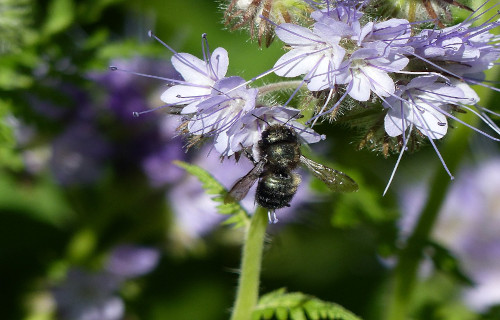
Blue Orchard Bee Facts
- Next up in this compilation of 6 Stunning North American Bees comes the distinctive work of Nature named the Blue Orchard Bee.
- This small yet still intriguing invertebrate continues to be most frequently referred to by the descriptive common name we’re using. The delicate Arthropod does have another, similar general name, though. That’s the slightly longer term of the Orchard Mason Bee.
- Within the scientific community, however, it’s typically referred to by its technical moniker. Fortunately for the layperson, that’s a much simpler name to pronounce than many of its countless relatives hold. That’s because it bears the official name of Osmia lignaria.
- The wonder received that specific appellation due to the efforts of the respected American entomologist, Thomas Say. The researcher accomplished the first formal recognition of it as a separate and distinct species. That scientifically noteworthy deed occurred in the 1837.
- It’s of great interest in certain circles, due to its extreme proficiency at pollinating certain crops. Long term geographical separation of its population eventually led to its division into two separate subspecies. One appears in the east, while the other lives in the west.
- In all parts of its range, however, the Blue Orchard Bee continues to maintain a sizeable and sufficient population base. That sets it apart from many of its less fortunate relatives across the globe. Due to this situation, the IUCN currently has no listing for it on the Red List.
- Nevertheless, this marvel of Nature and evolution must be considered to be facing several potential threats to its existence as a species. Most of these stem from the actions of humans. They include the perils posed by habitat loss, and of course, ongoing climate change.
Blue Orchard Bee Physical Description
The captivating Blue Orchard Bee certainly merits the attention typically applied to it. It represents a true masterpiece of evolution. The majority of its physical appeal, however, stems from its appearance, not size. That’s because, regardless of its many other attributes, it’s quite small.
Regarding its physical attributes, though, it follows a pattern quite common to many related species. That’s in the fact that it displays a certain degree of the physiological characteristic of sexual dimorphism. In its specific case, this trait manifests in terms of body size and body structure.
Females of this insect attain a greater average length than their male counterparts. This gender reaches an average length measuring roughly 0.55 in (1.4 cm). The body shape of the female also differs from the male of the species, though only slightly. Females evloved as stockier in build.
Males of the invertebrate, though only reach a total length averaging approximately 0.43 in (1.1 cm). As indicated above, their overall structure also remains somewhat slimmer than females. He also has longer antennae, since these have 13 segments, while the female has 12 of these sections.
The genders of the Blue Orchard Bee additionally vary to a small degree in their general appearance. Females of this natural wonder present a primarily iridescent bluish-gray that sometimes seems almost black. Her body further possesses a relatively dense covering of very small hairs.
The male, meanwhile, follows the same overall pattern, with the exception of some minor yet notable differences. He typically develops a small tuft of lighter colored hair on his head. Although he displays the same covering of fine hairs on his body, that’s less dense on the upper side.
- Kingdom: Animalia
- Phylum: Arthropoda
- Class: Insecta
- Order: Hymenoptera
- Family: Megachilidae
- Genus: Osmia
- Species: O/ lignaria
Blue Orchard Bee Distribution, Habitat, and Ecology
Thankfully, the amazing Blue Orchard Be evolved as indigenous to a comparatively wide expanse of the globe. The full extent of that range might surprise some readers, though. That’s true since this intriguing insect developed as endemic to an extensive portion of North America.
To the north, the intrepid invertebrate appears in all but the most northerly regions of Canada. Further south, it makes its home in all but the most southerly parts of the United States. It’s absent from Florida, and the southeast Gulf Coast, though. It’s not presently known in Mexico.
In all regions in which it appears, the Arthropod displays decidedly strong preferences regarding its choice of habitat. The creature lives almost exlusively in regions of temperate forests. Further specifying its tastes, these areas of habitation consist primarily of various deciduous species.
For undetermined reasons, however, even within this area, the fascinating creature also shows a strong favoritism for the edges of the forest. Such an environment provides it with its various needs. Those include suitable locations for both its nesting and appropriate food sources.
Unlike carpenter bees, the Blue Orchard Bee evolved as wholly unable to drill holes in wood for a nest. Instead, it seeks out such sites as reeds and natural holes in trees, even wooden structures. Though mostly solitary in nature, females do occasionally build nests near each other.
They’re principally active in early spring and summer periods of the year. Though examples feed on the nectar and pollen of numerous species, most do appear to be especially fond of pear, apple, and cherry trees. Males typically hatch first, and the first thing females do upon hatching is mate.
Gloden Northern Bumblebee
Golden Northern Bumblebee Facts
- Next up in this gathering of 6 Stunning North American Bees is the dazzling work of art bearing the designation of Golden Northern Bumblebee.
- The perfectly descriptive term understandably serves as the primary common name used for a particularly beautiful variety of bumblebee. Yet, this highly fascinating small invertebrate also bears another title. That’s the distinctive scientific name of the Bombus fervidus.
- By either name, though, the captivating small creature remains an impressive species. Fascinatingly, within its native range, it also remains an important pollinator. The natural wonder also represents on of the very first in its zone of habitation to be identified.
- This occurred through the efforts of the well-known Danish zoologist Johan Christian Fabricius, in 1798. The marvelous insect also displays some quite fascinating behavioral patterns. This even apparently includes a communication system based on dancing.
- This incredible product of Nature and evolution also developed a program of highly specialized nest defense strategies for different categories of intruders. When intrusions into the nest occur, multiple members move to cover the intruder with honey to hamper its movement.
- Like many species of bees found around the world, the population of the Golden Northern Honeybee sadly appears to be declining rapidly. The IUCN currently lists it as Vulnerable, as a result. This listing appears on the organization’s Red List of Threatened Species.
- This highly lamentable and rapid reduction in population appears to be occurring due to a variety of factors. While these include habitat loss, it’s also threatened by the ongoing and escalating effects of climate change, much like many other species around the world.
Golden Northern Bumblebee Physical Description
Surprisngly, perhaps, the wonder of the Golden Northern Bumblebee does not extend to size. In fact, it actually constitutes a small variety of bumblebee. Sexual dimorphism plays a factor as well. Female workers reach 0.75 in (1.9 cm) in length, while male drones only average 0.5 in (1.3 cm).
This small but truly beautiful example of its kind also displays this gender-based differentiation in another way. Intriguingly, the wingspan appears to be sex-related in this particular arthropod. That particular manifestation of the evolutionary principle easily sets it apart from numerous others.
The wings of a female of the species measure an average of approximately 1.6 in (40 mm) in overall span. However, that of the males only averages a measurement of roughly 0.86 in (22 cm). This represents a quite significant difference for a species of its size. Exceptions occur, but rarely.
This wonder of Nature’s also quite well known for its dazzling appearance, which never fails to please the eye. Its coloring usually appears as a combination of black and golden yellow. In yet another gender-based difference, though, the male typically displays more yellow than the female.
In other respects, though, individuals of both genders appear remarkably similar. The body of both evolved as covered with numerous comparatively short, but thick, hairs. The amazing Golden Northern Bumblebee also distinguishes itself from the smaller honeybee in an important way.
Impressively, unlike the even smaller honeybee, this remarkable species does not die after inflicting a sting. In point of fact, the impressive invertebrate has the ability to repeatedly attack an opponent with its stinger. This action rarely forms a danger to humans, however, unless one’s allergic.
- Kingdom: Animalia
- Phylum: Arthropoda
- Class: Insecta
- Order: Hymenopterta
- Family: Apidae
- Genus: Bombus
- Species: B. fervidus
Golden Northern Bumblebee Distribution, Habitat, and Ecology
The serenely beautiful Golden Northern Bumblebee developed as endemic to only a specific section of the globe, like many of its many relatives. More specifically, however, that native region consists solely of somewhat limited and restricted portions of the continent of North America.
Within that greater overall zone of habitation, its populations primarily concentrate in scattered portions of that continent. The fascinating arthropod most commonly appears in the northeastern portion of the United States, where it generally distinguishes itself from competing species.
Fortunately, the marvelous Arthropod displays a moderately high degree of flexibility in its choice of habitat. It’s thus found in a fairly wide variety of ecosystems. Each of these nevertheless do share certain conditions that serve to meet the insect’s particular natural requirements.
It’s frequently spotted in open, sunny areas of grasslands. Such settings typically include both wet and dry meadows, where flowering plants appear in abundance. It’s also common to the transition zones between forests and open areas, often with plenty of wildflowers, shrubs, and trees.
Interestingly, the intrepid creature further displays a fondness for higher elevations. There, either alpine meadows or subalpine habitats serve to provide suitable conditions. Yet, it does show some adaptability. It’s also occasionally present in or near agricultural areas, especially among hedgerows.
It also further sets itself apart from most other bumblebees in terms of its housing. Flexibly, the nests of this particular creation of Nature occur both underground and above. These the highly skilled bee commonly constructs out of a loose mass of grass held together with avian feces.
Adult specimens of the Golden Northern Bumblebee feed entirely on the nectar of various flowering plants. A wide variety of locally abundant flora serve. They play the pivotal role of important pollinators and are attracted to flowers such as clover, willow, and various other wildflowers.
In contrast, the young of the species are fed pollen collected by the workers of the colony. Nest populations also generally remain quite small. Amazingly, that number rarely exceeds sixty adults and pupae. Lifespans range from 34 days for workers to roughly 12 months for the queen.
Perdita minima
Perdita minima Facts
- Our next choice for inclusion in this listing of these 6 Stunning North American Bees is the mind-boggling creature named the Perdita minima.
- That fittingly short title actually represents the scientific designation for this astounding creation of Nature and evolution. The insect received that simple moniker due to the efforts of the highly respected American entomologist Theodore Cockerell in the year 1923.
- Despite this being the technical appellation for it, the creature does also possess several other general titles by which it’s sometimes known. All represent variations of a theme, however. These include the terms Small Perdita Bee, Tiny Perdita Bee, Perdita’s Miniature Bee.
- This truly amazing Arthropod stands out in the annals of science for multiple reasons. Chief among those stands the fact that it represents the most diminutive of all species of bee currently known to science. Its entire body easily fits on just the head of an average-sized bee!
- Scientists do know that it possesses a moderately restricted habitat range. Yet we know virtually nothing about its population numbers. Not surprisingly, its tiny size literally makes it difficult for experts to find individuals to determine accurate information on this matter.
- Due to this lack of sufficient information, the IUCN currently has no status listing for the invertebrate on the organization’s Red List of Threatened Species. Nevertheless, while science knows almost nothing about its numbers, many suspect that its existence to be threatened.
- This belief springs from a combination of factors relating to its habitat and environment. The area the Perdita minima inhabits remains especially vulnerable to ongoing climate change. Numerous other factors also endanger it, including loss of habitat due to human expansion.
Perdita Minima Physical Description
Despite its awesome nature, the Perdita minima routinely goes overlooked by everyone around it. That’s not due to any lack of intriguing appearance or other attributes, though. This lack of notice simply occurs due to the fact that Nature packed its wonders into an incredibly small package.
In that respect, however, it follows the pattern common to most insects, including its multitudinous relations around the world. That’s the fact that it displays a certain amount of the physiological characteristic of sexual dimorphism. In it, the trait manifests itself in several ways.
Astonishingly, mature adults of this remarkable Arthropod only attain an average total body length measuring between 0.24 – 0.28 in (6 – 7 mm). Females of the species typically reach greater lengths than their male counterparts. The latter also generally remain smaller and more slender.
Its natural coloring typically presents viewers with dazzling hues, at least when those fortunate few actually manage to spot the miniscule creature. This color pattern primarily consists of various shades of bright yellow. However, some individuals also display streaks of gold or even white.
While the animal does technically have a stinger, this appendage understandably remains incapable of piercing the skin of a human. The wings of the Perdita minima also merit attention. That holds true because these actually qualify as powerful and large, at least relative to the body size.
These comparatively strong features also allow the fascinating bee to frequently carry comparatively large quantities of pollen. In yet another marvel of evolutionary development, numerous relatively large hairs additionally cover the tiny legs of this small but surprisingly impressive insect.
- Kingdom: Animalia
- Phylum: Arthropoda
- Class: Insecta
- Order: Hymenoptera
- Family: Andrenidae
- Genus: Perdita
- Species: P. minima
Perdita Minima Distribution, Habitat, and Ecology
The mind-boggling Perdita minima apparently evolved as native to a moderately restricted portion of the surface of the earth. The precise location of that zone of habitation might surprise quite a few individuals, though. That’s because it evolved as endemic to a few portions of the North America.
There, it’s found mainly within the borders of the United States. It doesn’t appear in all parts of this range, however. Instead, its territory seems to consist primarily of the thinly populated southwestern sections of the area. A small part of its native population also appears in northern Mexico.
It also chooses to reside in areas not normally associated with insects of its type. The species evolved highly selective and unique habitat preferences. It’s most often associated with regions that have loose, sandy soils. This commonly includes such areas as deserts, grasslands, and scrublands
The wonder also distinguishes itself from most of its kind in some of its behavioral patterns. This extends to its nesting strategies. It lives a solitary life, usually nesting in the ground, digging small burrows in fine, sandy, or loose soils. The bee also typically nests in areas with minimal vegetation.
To the amazement of many people, despite its small stature, the Perdita minima plays a pivotal role in the ecosystems where it is found. It functions as what entomologists call a specialist pollinator. That’s due to the fact that it primarily collects pollen from a highly limited range of plant species.
In so doing, it contributes to the reproduction of many of the flowering plant species in its ecosystem. Both the adults and larvae alike mainly feed on the pollen and nectar of several varieties of flora. The vast majority of these food sources lie within either the sunflower or legume Families.
Franklin’s Bumblebee
Franklin’s Bumblebee Facts
- Appearing now in this compendium of othese 6 Stunning North American Bees we present the remarkable species known as the Franklin’s Bumblebee.
- This somewhat diminutive marvel of Nature and evolution most frequently goes by the simple common name listed in this article. For the moment, the remarkable insect has no other accepted general name. Though certainly not unknown, that’s slightly uncommon.
- Among scientific professionals, however, it’s much better known by its technical title. Fortunately for the layperson, that’s a much simpler to pronounce term than many such monikers. That’s because it bears the simple official title of the Bombus franklini.
- The beautiful invertebrate received that formal title due to the efforts of the American entomologist, Theodore H. Frison. The respected scientist accomplished the first recognition of the creature as a separate and distinct species. He managed that feat in the year 1921.
- Despite its simple appearance, this marvelous Arthropod stands out from its relatives in several ways. One of those is an unfortunate one, though. That holds true due to the fact that the invertebrate inhabits one of the smallest ranges of any of known bumblebee variety.
- Sadly, this fact severely limits the possibilities for the delicate Franklin’s Bumblebee. Its numbers began dwindling rapidly in recent years. Between 1998 and 2005, sightings plummeted sharply. No confirmed individual of this species has even been seen since 2006.
- It’s entirely possible, in fact, though not yet certain, that it’s now extinct. For the moment, the IUCN lists it as Critically Endangered. Even if a few do still survive, they face extreme threats to their existence. These include the perils of habitat loss and climate change.
Franklin’s Bumblebee Physical Description
The captivating Franklin’s Bumblebee always impresses those people fortunate enough to encounter one, and recognize it. The bee does so due to the differences in its appearance that distinguish it from other bumblebees, however. It does not do so, though, due to its sheer physical size.
That’s due to the obvious fact that, like its many relatives, it’s a very small variety of invertebrate. Much like them, it also displays a certain degree of the physiological characteristic of sexual dimorphism. In its specific case, though, this trait manifests in terms other than measurements.
Intriguingly, males of this intriguing Arthropod develop one more abdominal segment than their female counterparts. Females, meanwhile, display a slightly different patter of coloring than the males. The overall difference in appearance remains minor to the untrained observer, though.
Both genders of the Franklin’s Bumblebee display a solid black abdomen. That small characteristic separates them from all other known bumblebees. Both sexes additionally manifest light yellow hair on the anterior portion of the thorax. Uniquely, this also develops in a U-shaped pattern.
The head and face of both genders of the beautiful insect present a predominantly black background. Individuals do, however, display a very small patch of yellow at the top of the head. At the tip of the abdomen in both genders, an equally tiny white patch also typically appears.
- Kingdom: Animalia
- Phylum: Arthropoda
- Class: Insecta
- Order: Hymenoptera
- Family: Apidae
- Genus: Bombus
- Species: B. franklini
Franklin’s Bumblebee Distribution, Habitat, and Ecology
The visually distinctive wonder that’s the Franklin’s Bumblebee evolved as native to a region of the world well known for its numerous natural marvels. Unfortunately, however, its portion of that area seems to be extremely limited. It lives in only a tiny part of what’s now North America.
The beautiful insect apparently lives in only a small range of the United States. More precisely, its only known range consists of portions of Oregon and California. Even there, though, the insect is just known to exist in a region that measures roughly 190 mi by 70 mi (310 km by 110 km).
For the moment, it remains undetermined if the bee ever appeared anywhere else in the world. Within that tiny range, though, it does, at least, display an adaptability to different habitat types. The broadly evolved biological wonder simply requires the presence of sufficient flowering flora.
Impressively, the intrepid invertebrate also makes its home at a comparatively wide range of altitudes. In the more northern section of its tiny range, it’s been seen at altitudes as low as only 540 ft (162 m) above sea level. Further south, however, it’s been spotted at 7,800 ft (2,340 m).
Much like similar species, the Franklin’s Bumblebee lives and functions as a eusocial creature. It lives in colonies consisting of a queen and her offspring, both males and sterile female workers. Its exact nesting strategy remains unknown, but it’s believed to prefer abandoned burrows.
The workers of the species, rarely exceeding 400, acquire food from a wide variety of flowering plants. Nectar serves as the primary food source of mature adults. The young, however, require a higher nutritional content. For them, workers gather pollen from the same local plant sources.
Orange-belted Bumbleee
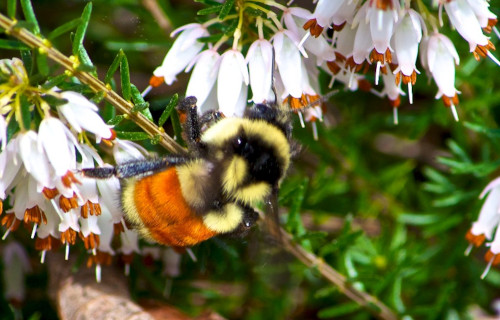
Photo: Distant Hill Gardens and Nature Trail
CCL: https://tinyurl.com/2s4apsss
Orange-belted Bumblebee Facts
- Closing out this article about 6 Stunning North American Bees we give you the mesmerizing marvel understandably named the Orange-belted Bumblebee.
- This vibrant creation of Nature and evolution most frequently goes by this appropriate common name across its entire native range. Yet, the natural wonder does have at least one other widely accepted general title. That’s the term of tricolored bumblebee.
- Inside of the scientific community, however, it’s perhaps somewhat better known by its technical appellation. Fortunately for the layperson, though, that’s a comparatively simple tag, as such things go. That’s because it holds the official epithet Bombus ternarius.
- The marvelous Arthropod received that moniker due to the efforts of Thomas Say. The widely respected American entomologist accomplished the first recognition of it as a separate and distinct species. He managed that scientifically noteworthy feat in the year 1837.
- Pleasantly, the amazing Orange-belted Bumblebee seems to still possess a stable and sufficient population base. That fortunate situation also appears to hold true throughout the entirety of its range. The IUCN thus currently lists it as Least Concern on its published Red List.
- The insect nevertheless faces the same potential threats to its continued existence as all species on earth now do. Most of those dangers stem from the actions of mankind. These perils include such perils as habitat loss and the ongoing effects of climate change.
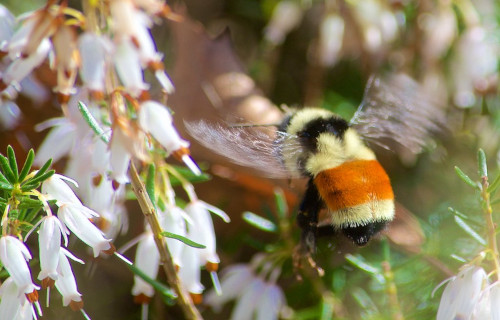
Photo: Distant Hill Gardens and Nature Trail
CCL: https://tinyurl.com/2s4apsss
Orange-belted Bumblebee Physical Description
The remarkable Orange-belted Bumblebee typically draws much appreciation from those individuals who appreciate Nature. As a general principle, however, the invertebrate does not do so due to its size. That’s true since the creature ranks as a fairly small member of its Genus.
Like related species around the globe, this animal displays a certain degree of the physiological characteristic known as sexual dimorphism. In keeping with the pattern prevalent among members of its Family, though, the species manifests this trait in a different way than most others.
It’s still true that the two genders display varying physical characteristics. But, given that it’s an Apidae, it also possesses what might be considered a sub-class, as well, depending on perspective. The different groups display a range of physical characteristics that serve to distinguish them.
The queen, of course, is female. She ranges in average length from 0.67 – 0.75 in (1.7 – 1.9 cm). Her body width attains a mean measurement of approximately 0.33 – 0.35 in (0.85 -0.9 cm). Given these dimensions, it’s apparent that she developed as slightly slimmer than most of her relatives.
Males of the species, though, known as drones, achieve much smaller measurements. The shorter bodies reach an average length equaling approximately 0.37 – 0.51 in (0.95 – 1.3 cm). In terms of width, at the abdomen this sex manages a mean of between 0.18 – 0.22 in (0.45 – 0.55 cm).
Then, the species additionally has a worker class. Though technically female, they differ from the queen in tht they’re sterile. They’re also smaller than either the queen or the drones. Each only measures about 0.31 – 0.51 in (0.8 – 1.3 cm) in length. In breadth, they’re the same as males.
Differences also manifest in appearance among the various groups of the Orange-belted Bumblebee. Queens and worker show a black head, with light yellow hairs. These also present bands of yellow, orange, and black on the bodies. That trait serves as the source of the common name.
The drones, however, show a distinctlly different pattern of coloring. Its head develops as yellow in color, with a scattering of small black hairs. The pattern of hues on the body is similar, but not identical to, that of the others. This group also develops much longer fur than that of the others.
- Kingdom: Animalia
- Phylum: Arthropoda
- Class: Insecta
- Order: Hymenoptera
- Family: Apidae
- Genus: Bombus
- Species: B. ternarius

Photo: Distant Hill Gardens and Nature Trail
CCL: https://tinyurl.com/2s4apsss
Orange-belted Bumblebee Distribution, Habitat, and Ecology
The Orange-belted Bumblebee evolved as native to a relatively large expanse of the surface of the earth. The exact location of that zone of habitation rarely comes as a surprise to those who learn of it, however. That’s true since the natural marvel developed as endemic to North America.
Within that greater area of habitation, though, the Arthropod only appears in parts of the overall range. To the north, it inhabits much of the country of Canada. The southern section of its habitation range includes much of the northern and northeastern parts of the United States.
Just like most of its many relations, the intriguing Arthropod evolved fairly clear preferences regarding its choice of habitat. It strongly prefers the more temperate conditions found in the northern extent of its territory. On occasion, though, some do venture further south.
Yet, it does show some moderate flexibilty pertaining to what types of local ecosystems it lives in. The amazing insect prefers to make its nests in undisturbed areas, such as forests, fields, and meadows. It’s not unknown, however, for these to appear in parks or even private yards.
The Orange-belted Bumblebee further developed as a species with only a single lifecycle per season. Queens generally emerge from hibernation in late April. These constructs their nests in shallow cavities on the ground, an dlays her eggs. Its colonies rarely exceed 200 individuals.
The lovely invertebrate follows the same pattern as its numerous kindred regarding its diet. This consists solely of the nectar and pollen of various locally available plants. It does show a small preference, though. Its favorite sources include goldenrod, milkweed, and many berries.
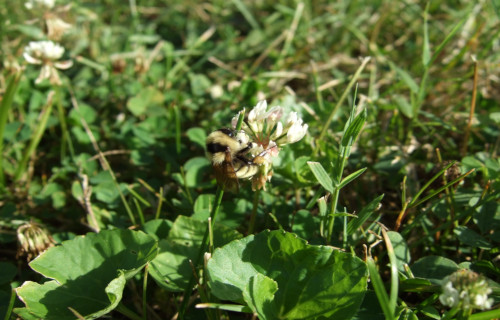
6 Stunning North American Bees
We sincerely hope that each of you thoroughly enjoyed reading, and hopefully learning from, this article we’ve written about these 6 Stunning North American Bees. It’s also our hope that doing so has left you with either a new or renewed appreciation for such wonders of Nature.
Unfortunately, however, many of their numerous kindred around the world now find themselves facing strong threats to their continued existence as a species. Many of those dangers, in fact, stem from the actions of mankind. We must do all we can to protect and preserve them all.
Check kout our other articles on 5 Pleasing Insects of Portugal, Earth’s Many Stunning Waterfalls, 5 Thrilling Animals of Thailand, The Mighty Tornado, 5 Beautiful Birds of Venezuela
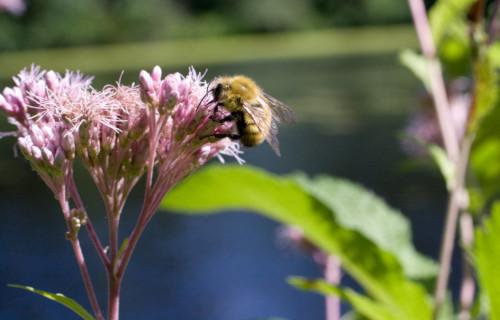
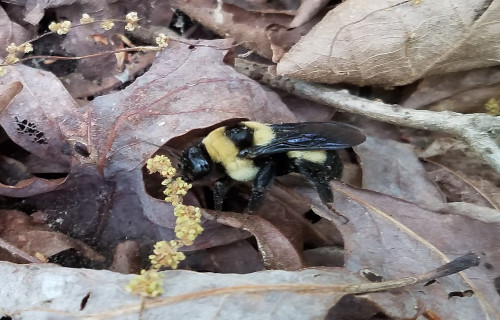
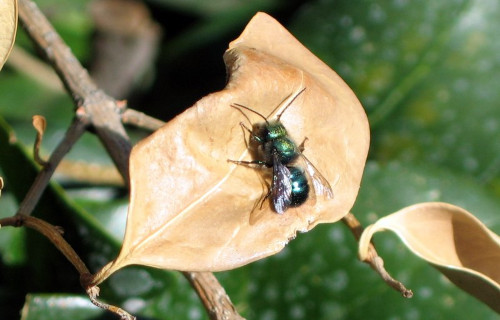
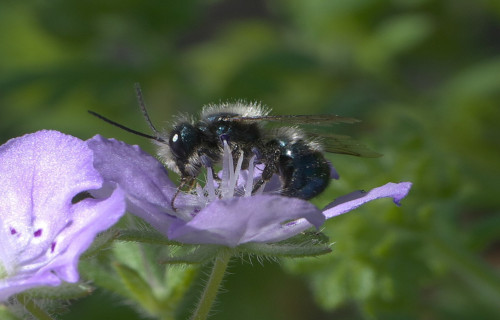
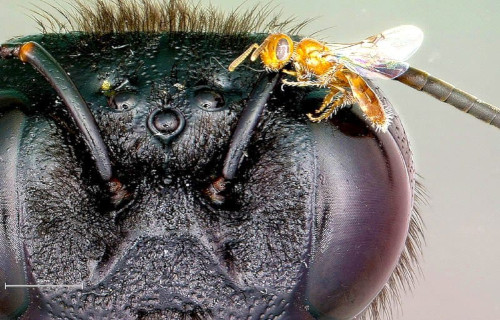
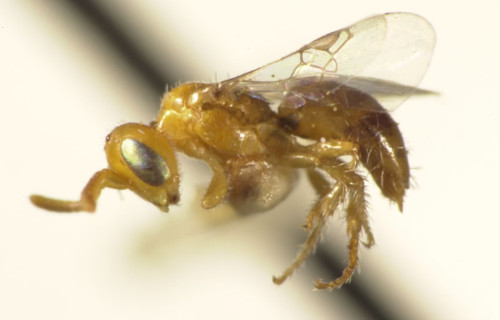

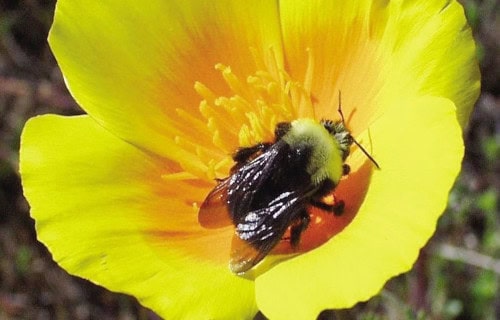









Leave a Reply